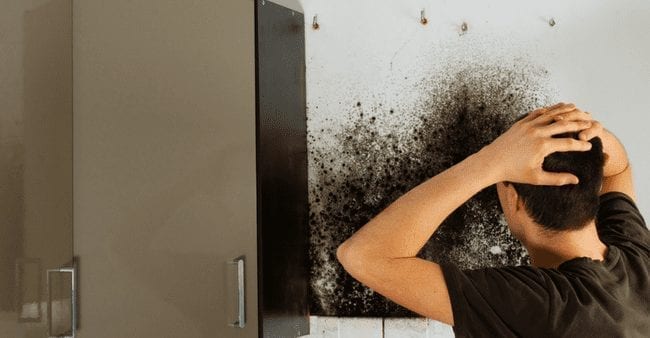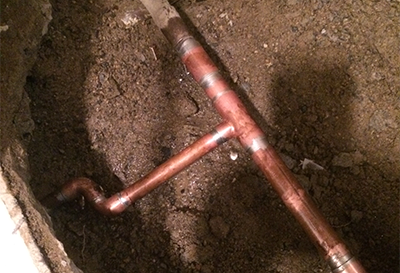How to Inspect If Your Residence Has a Concealed Leakage
How to Inspect If Your Residence Has a Concealed Leakage
Blog Article
Everybody may have their own unique opinion about Detecting hidden plumbing leaks.

Early discovery of dripping water lines can reduce a possible calamity. In addition to conserving you cash, it will reduce the stress and disappointment. The moment you locate a leakage, calling your plumber for repairs is the most effective solution. Some little water leaks might not be noticeable. Right here are some hacks that aid if you can not find it with your naked eyes.
1. Check Out the Water Meter
Examining it is a guaranteed means that aids you discover leakages. If it moves, that indicates a fast-moving leakage. This implies you may have a sluggish leakage that can even be below ground.
2. Inspect Water Usage
Assess your water bills and track your water usage. As the one paying it, you should see if there are any kind of inconsistencies. If you find sudden changes, in spite of your intake coinciding, it means that you have leakages in your plumbing system. Keep in mind, your water bill should drop under the same range each month. An abrupt spike in your costs shows a fast-moving leakage.
On the other hand, a stable rise on a monthly basis, even with the same practices, reveals you have a slow-moving leak that's likewise gradually escalating. Call a plumber to thoroughly examine your building, specifically if you feel a warm location on your flooring with piping below.
3. Do a Food Coloring Examination
When it involves water consumption, 30% originates from bathrooms. Examination to see if they are running correctly. Drop specks of food color in the tank and also wait 10 mins. There's a leakage between the container and also bowl if the shade in some way infiltrates your dish during that time without flushing.
4. Asses Exterior Lines
Do not forget to inspect your outside water lines too. Needs to water seep out of the connection, you have a loosened rubber gasket. One small leakage can squander lots of water as well as spike your water bill.
5. Inspect and also Analyze the Circumstance
Homeowners ought to make it a practice to inspect under the sink counters and also also inside cupboards for any type of bad odor or mold and mildew development. These 2 warnings suggest a leak so punctual interest is needed. Doing routine assessments, even bi-annually, can save you from a major trouble.
More importantly, if you understand your residence is already old, maintain a watchful eye on your heating systems, hoses, pipes and so on. Check for stainings and also weakening as many pipes and also devices have a life expectancy. They will also normally weaken because of damage. If you presume dripping water lines in your plumbing system, don't wait for it to rise. Call a specialist plumber right away so you don't wind up with a horrible mess in your home.
Early detection of leaking water lines can alleviate a possible catastrophe. Some small water leakages may not be noticeable. Checking it is a surefire method that aids you discover leaks. One small leak can waste tons of water as well as spike your water costs.
If you believe leaking water lines in your plumbing system, don't wait for it to rise.
WARNING SIGNS OF WATER LEAKAGE BEHIND THE WALL
PERSISTENT MUSTY ODORS
As water slowly drips from a leaky pipe inside the wall, flooring and sheetrock stay damp and develop an odor similar to wet cardboard. It generates a musty smell that can help you find hidden leaks.
MOLD IN UNUSUAL AREAS
Mold usually grows in wet areas like kitchens, baths and laundry rooms. If you spot the stuff on walls or baseboards in other rooms of the house, it’s a good indicator of undetected water leaks.
STAINS THAT GROW
When mold thrives around a leaky pipe, it sometimes takes hold on the inside surface of the affected wall. A growing stain on otherwise clean sheetrock is often your sign of a hidden plumbing problem.
PEELING OR BUBBLING WALLPAPER / PAINT
This clue is easy to miss in rooms that don’t get much use. When you see wallpaper separating along seams or paint bubbling or flaking off the wall, blame sheetrock that stays wet because of an undetected leak.
BUCKLED CEILINGS AND STAINED FLOORS
If ceilings or floors in bathrooms, kitchens or laundry areas develop structural problems, don’t rule out constant damp inside the walls. Wet sheetrock can affect adjacent framing, flooring and ceilings.
https://www.servicemasterbyzaba.com/blog/how-to-detect-water-leakage-in-walls/

I am just very focused on Locating water leaks and I really hope you liked the new piece. Sharing is good. One never knows, you may very well be doing someone a favor. Thanks a lot for going through it.
Report this page